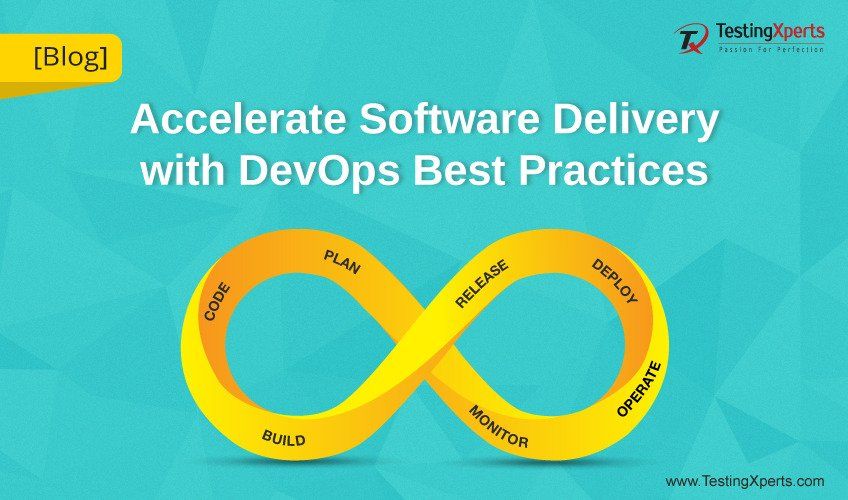Recommended Blogs
Accelerate Software Delivery with DevOps Best Practices

- DevOps QA Best Practices
- Disentangle from the traditional roles and responsibilities of QA
- Communication and Collaboration are Imperative
- Include QA in the Requirements Gathering Process
- Detecting Software Defects Early
- Multiple Virtual Testing Environment is Essential
- Conclusion
The advent of Agile and DevOps as a practice over the few years has helped enhance the quality of software immensely. The highly collaborative nature of both the methodologies has led to rapid deployment cycles, and in some cases, it has also helped in achieving the speed of Continuous Integration. The best way to ensure the quality of the software is by implementing the right amount of QA. In fact, implementing an integrated DevOps and continuous testing quality approach has become relevant for all the organizations now.
A highly iterative DevOps process lays more pressure on the QA role to properly evaluate software while working closely with developers, network professionals, and business stakeholders. In this article, we will explore how DevOps is the best way to strengthen the project and be absolutely sure of what you are shipping to the customer. With high-quality software as the main aim, here are some DevOps QA best practices that will help accelerate the software delivery and also maintain the quality of the software.
DevOps QA Best Practices
1. Disentangle from the traditional roles and responsibilities of QA:
The traditional roles and responsibilities of QA are more time-consuming, contradicting the basic fundamentals of agile, i.e. quick turnaround and early feedback. Hence, with DevOps, integrating QA early-on in the lifecycle helps to significantly reduce development cycles and also meet customer expectations as intended.
2. Communication and Collaboration are Imperative:
Strong communication and collaboration help in maintaining a clear focus on software quality while making an early release possible. Communication helps in making the objective clear while collaboration makes it easy to deliver the software on time. In several cases, a different pair of eyes looking at the same application helps to identify a different issue. Keeping everyone on the same page is vital to a project’s success.
3. Include QA in the Requirements Gathering Process:
It’s essential for every work stream to have a common understanding of what functionality is built. Involving QA at the start is vital, as the requirements/user stories get assessed from a testability standpoint. This helps in identifying critical areas for tests and planning the test efforts better. An added advantage is that everyone is able to collaborate with each other early on.
4. Detecting Software Defects Early:
One of the main advantages of DevOps methodology is the way its iterative approach helps in detecting software issues. This is very critical to minimize re-work effort and thereby to control the cost of quality.
5. Multiple Virtual Testing Environment is Essential:
The volatile growth in the global software market and the rapid advancement in computing technologies have shortened the software development lifecycle. Due to the focus on cost-effectiveness, the focus has now shifted to optimizing the software development lifecycle. In order to overcome the problems of hardware cost and environment set-up, multiple virtual testing environments are essential for testing. A virtual testing environment provides isolated sandboxes for running applications, which presents homogenous environments on heterogeneous hardware.
DevOps is not just a process, but an effort to improve an organization’s overall culture and practices in order to ensure a better customer experience and improved business outcomes. To facilitate continuous delivery, DevOps has become a priority.
Discover more
Stay Updated
Subscribe for more info

